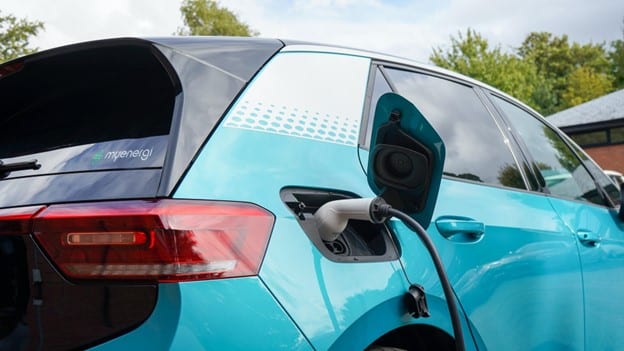Table of Contents
Unfortunately, we live in a world where charging standards are not unified. People in North America even have 2 different charging standards: CCS1 and NACS (Tesla). Chargers in Europe are regulated and adopt the CCS2 standard, in Japan, they use the CHAdeMO.
China, a country of 1.4 billion people, reasonably has implemented its own charging standard: GB/T. The acronym “GB/T” stands for “Guobiao standard” (国标), where “Guo” means national or state, and “Biao” means standard. Chinese electric cars have two separate charging ports: AC and DC. Therefore a Chinese EV won’t be able to charge directly from a European charging station. You will need an adapter
What Are CCS2 to GBT Adapters
This is the bridge between a GB/T electric vehicle and a CCS2 charging station. Compared to most adapters this one is more complicated due to the different communication protocols between the two charging standards. CCS2 uses PLC signals while GB/T DC uses CAN signals and the conversion between the two is more complicated than other AC/DC charging adapters.
Myths About Charging a Chinese Car in the EU
This product has been produced by only one factory in China for quite a long time. During that time the product gained a negative reputation due to bad compatibility, unstable charging speed, and poor reliability.
Now that we have a better understanding of the product and more factories produce it these problems have been eliminated. Nonetheless, concerns among customers are still present. Today we will discuss three concern areas that have been revised.
Speed
Charging speed is a common concern customers have. Theoretically, the adapter is capable of reaching 200 kW (200A*1000V). Practically it depends on your vehicle and the charging station. If your vehicle has a 400V battery architecture you will get around 80 kW of charging power (200A*400V).
The CCS2 to GBT adapter is also compatible with 800V vehicles such as the Zeekr 001. In this case, the maximum charging power you will get is 160 kW (200A*800V). Based on our experience with the adapter, it follows a similar charging curve as the CCS2 vehicles.
This means that at low SOC it charges at the highest power and gradually decreases as the SOC increases. We have not noticed any power drops in the charging process. In case any customer notices a power drop we will immediately examine the data from their adapter and issue a firmware update which would solve that.
Reliability
We understand this is an expensive product and people expect it to last. Made out of durable materials and high-quality electronics, this adapter is durably designed. Despite that, we offer a 1-year warranty. So far we have not encountered a defective adapter.
Compatibility
Compatibility is the top 1 concern among buyers. Previous versions of this adapter were not compatible with every CCS2 DC charger available. We are proud to say that the CCS2 to GB/T Adapter from EVniculus has not encountered any unsupported CCS2 charging station yet.
The adapter has been tested in over 15 countries and over 30 charging station brands including ABB, Siemens, Hypercharger, Engie, Schneider, ZES, Efacec, Regeny, Autel, Sungrow, and others.
However, we understand these concerns and therefore we offer lifetime software support. In case there is an unsupported charging station we are obliged to release a new firmware update based on the error data that the adapter has recorded.
The Best Adapters for Chinese Cars in Europe
As you might already guess, the most practical adapter you can get is the CCS2 to GBT. This is a high-speed DC adapter that allows electric cars with GBT ports to charge at CCS2 stations.
Practically this is a must-have adapter for everyone who plans on making long road trips with a Chinese electric car. It allows you to charge your car from 20% to 80% in less than 45 minutes* (time depends on your battery capacity and charging station power).
A compromise option for Chinese EV owners in Europe is the AC Type 2 to GBT adapter or the so-called slow charging adapter. Depending on whether your car can receive 3-phase electricity you will charge at either 7 kW or 11 kW (very few Chinese EVs can receive 22 kW).
This means that it will take around 8 hours to fully charge a battery with an average capacity (60 kWh). This option is suitable only for people who commute locally and return to charge at home or at a public Type 2 charging station. Our recommendation is to have both the DC and the AC adapter so you are prepared to charge at any charging station in Europe.
AC charging is usually preferred as it is cheaper and more accessible. You just shouldn’t be in a hurry.


